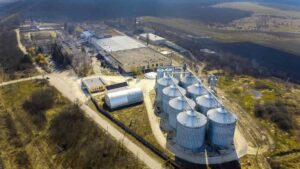Originally published from Renee Bassett,Automation, this article highlights the importance of a CO2 Analyzer in carbon capture and net-zero energy transition.
According to the International Energy Agency (IEA), around 1 billion metric tons of CO2 need to be captured annually around the world by 2030—about 20 times more than the 50 million metric tons captured in 2023. The current consensus is that the use of renewable energy sources and improvements in energy and material efficiency could significantly reduce global carbon emissions, but they are not enough to fully decarbonize industries. Carbon capture, utilization and storage (CCUS)— a combination of technologies used to remove carbon dioxide (CO2) from the atmosphere—is also important.

“CCUS is considered by many to be essential for reaching net zero emissions (NZE) by the 2050 Scenario outlined in the Paris Agreement due to its ability to remove hard-to-abate emissions,” explained Alex McQueen, Research Analyst at ABI Research. “Organizations like the IEA and the International Renewable Energy Agency (IRENA) recommend that countries define net-zero strategies where CCUS ensures all emissions are targeted. Despite this, the current economic viability of carbon capture remains a significant challenge to global implementation and progress is well off the pace outlined in the NZE.”
The application of carbon capture technology is growing but building carbon capture infrastructure is costly and retrofitting the technology in industrial plants can also cost hundreds of millions of dollars. McQueen said about 65% of all projects in operation are at natural gas processing plants—the lowest-cost application of carbon capture. Most CCUS projects have been integrated into oil & gas and chemical facilities so far, but investment is diversifying to industries such as power, hydrogen, iron and steel, and direct air capture (DAC), he adds.
“The broader industrial sector needs to prove that CCUS is economically viable at scale given its history of sluggish growth in deployment,” said McQueen.
Industry leaders like Shell, BASF and Exxon Mobil are investing in CCUS technology and, in North America, several large-scale projects in oil & gas facilities are underway. CCUS in the steel industry, however, is “being overlooked as steelmakers turn to direct reduced iron (DRI) and electrolyzer technology to decarbonize the industry, creating green steel. Capture rates at the few CCUS plants for steel production are very low and there are no more commercial-scale projects in the pipeline,” McQueen said.
The current penetration of CCUS is limited by the high costs of equipment and energy needed for capture and compression, as well as long lead times for implementation, McQueen said. “For CCUS to play its expected pivotal role in the energy transition, significantly higher CCUS capacity will be needed to increase CO2 capture rates,” he added.
Finding CCUS Solutions
Global industrial companies such as Shell, BP, Honeywell and Air Liquide are investing heavily in CCUS technology, developing a range of capture technologies and supporting transport and storage capacity growth. Demand for the technology has led to an increasing number of dedicated companies providing carbon capture technology. These include Aker Carbon Capture, Climeworks and Carbfix.
ABI Research forecasts that the CCUS market will increase from US$4.89 billion in 2024 to US$8.04 billion in 2030. North America holds the majority share of the CCUS market at US$2.47 million in 2024, with around 50% of global operational capacity, and is expected to lead throughout the forecast period, McQueen said. Europe is expected to see the fastest growth between 2024 and 2030, with a CAGR of 35.2%, with the EU investing heavily through government initiatives like the Innovation Fund, which has granted US$1.5 billion toward CCUS demonstration projects.
McQueen said the costs of CCUS infrastructure will decline as innovation and technological developments increase, “but achieving this will require billions if not trillions of investment. The effectiveness of carbon capture as a decarbonization tool will depend on its development over the next decade.”
These findings are from ABI Research’s Carbon Capture, Utilization and Storage market data report. This report is part of the company’s Sustainability for Industrial Markets research service, which includes research, data and ABI Insights.
If you have questions or want to get more information,please contact us directly!









